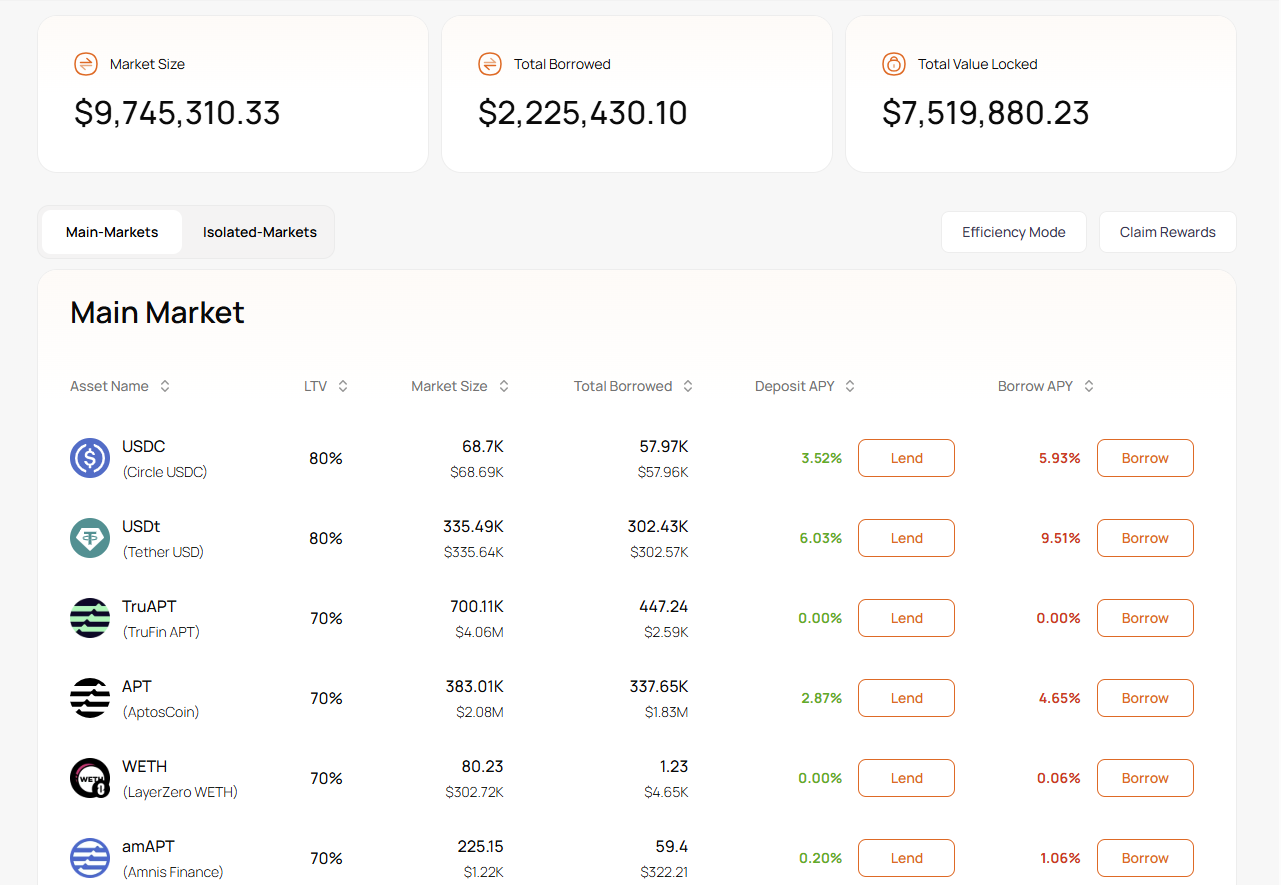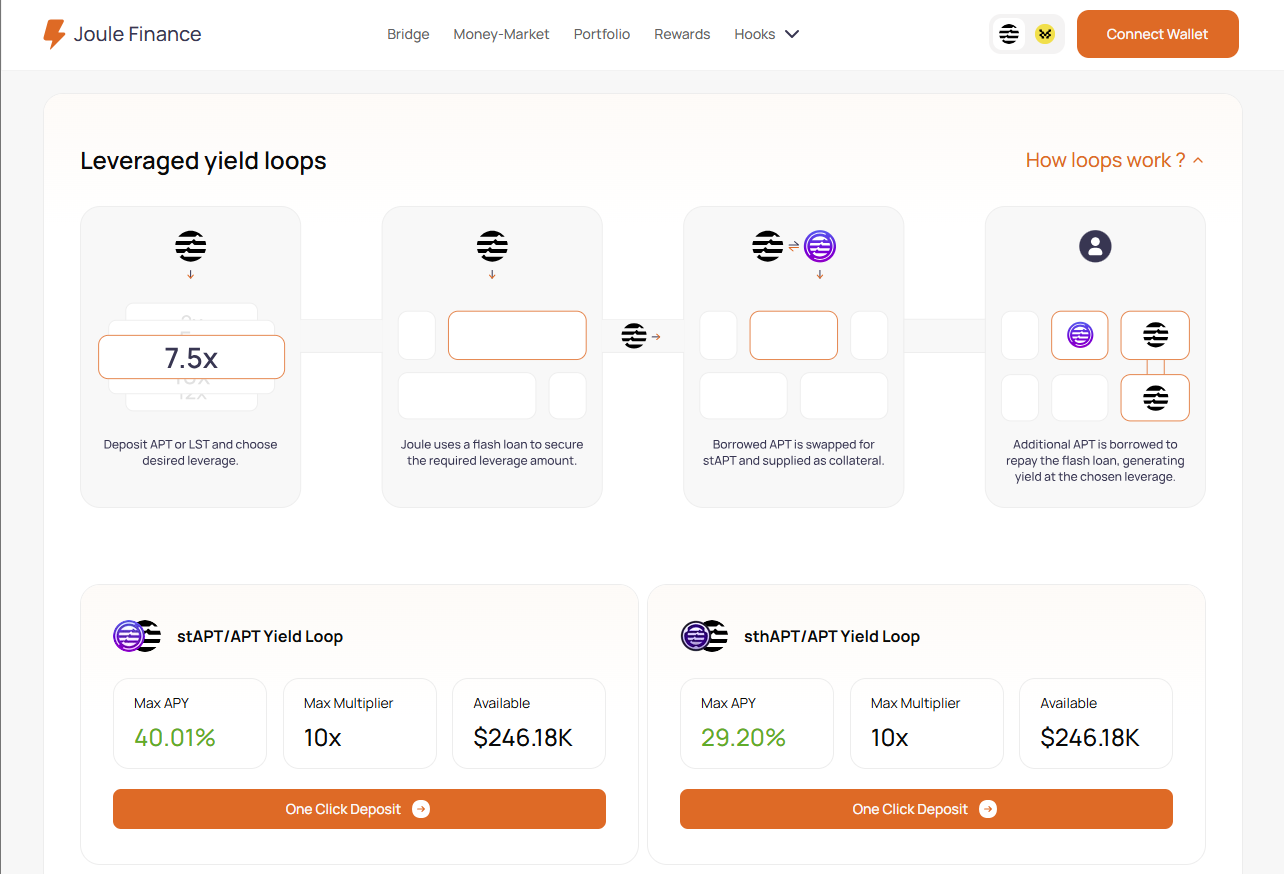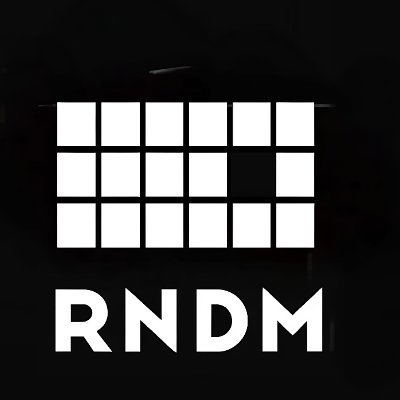Quick Overview
Joule Finance positions itself as the "liquidity hub" of the Move ecosystem, providing a unified venue for lending, borrowing, and leveraged yield strategies. At its core, Joule is a money market similar to Aave, but it layers on advanced strategy automation including leveraged yield farming, looping strategies, and cross-chain liquidity integration via LayerZero bridge for Liquid Restaked Tokens.
Key Features
- Money Market Core: Lend assets to earn interest or borrow against collateral with competitive rates
- Leveraged Yield Farming: Borrow assets to farm yields with automated leverage management and optimization
- Liquidity Anchors: Yield-bearing strategy vaults offering optimized returns like stAPT/APT looping with high APR
- LRT Bridge Integration: LayerZero-powered bridge bringing Liquid Restaked Tokens into Aptos/Movement ecosystem
- Capital Efficiency Maximization: Borrow, leverage, and farm yields in unified platform with integrated risk management
How to use
Joule Finance
Prerequisites
- Aptos/Movement compatible wallet (Martian, Petra, Nightly)
- Assets for lending or borrowing (APT, USDC, supported tokens)
- Understanding of leveraged yield farming risks and liquidation mechanics
- Knowledge of liquid staking derivatives and cross-chain bridge operations
Getting started
Connect Wallet
Visit joule.finance, connect Aptos/Movement wallet, verify network and available asset balances
Supply Liquidity
Deposit assets into lending pools to earn interest from borrowers and protocol incentives
Borrow Assets
Use supplied collateral to borrow other assets for trading, farming, or leveraged strategies
Access Liquidity Anchors
Enter automated yield strategies like leveraged staking loops for amplified returns
Monitor Positions
Track lending rates, borrowing costs, liquidation risks, and overall portfolio performance
Tips & Best Practices
- Leverage Management: Start with conservative leverage ratios to understand platform mechanics and liquidation risks
- Rate Monitoring: Track interest rate changes as borrowing costs can fluctuate based on utilization rates
- Collateral Diversification: Use multiple asset types as collateral to reduce concentration risk
- Strategy Research: Understand underlying protocols and strategies in Liquidity Anchors before depositing
- Cross-Chain Considerations: Factor in bridge risks and timing when using LRT bridge features
Technical Information
MoveVM
Instant lending/borrowing, variable for leveraged strategies
Money market core + leveraged strategy automation + LRT bridge + risk management
Move language safety, audited lending protocols, liquidation protection mechanisms


Frequently Asked Questions
What makes Joule different from other lending protocols?
Combines traditional money market with automated leveraged yield strategies and cross-chain LRT integration
How do Liquidity Anchors work?
Automated strategy vaults that use borrowed funds for leveraged yield farming with optimized risk management
What is the LRT bridge?
LayerZero-powered bridge bringing Liquid Restaked Tokens from Ethereum into Move ecosystem for additional yield
What are the risks?
Liquidation risk from leverage, smart contract risk, interest rate volatility, and cross-chain bridge risks
How much leverage is available?
Up to 10x leverage through looping strategies, with automated risk management and liquidation protection



